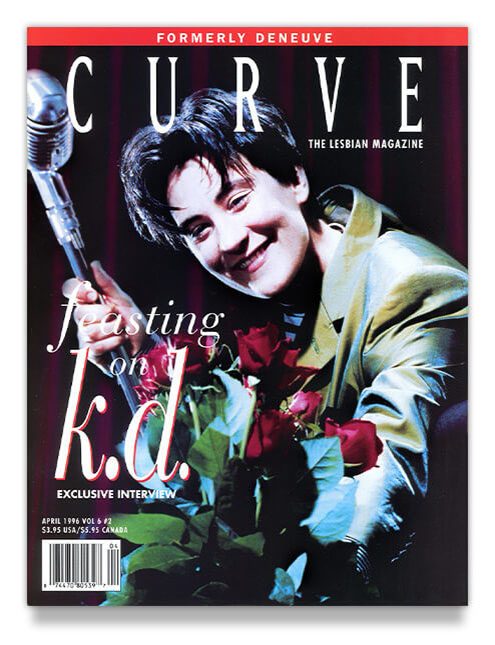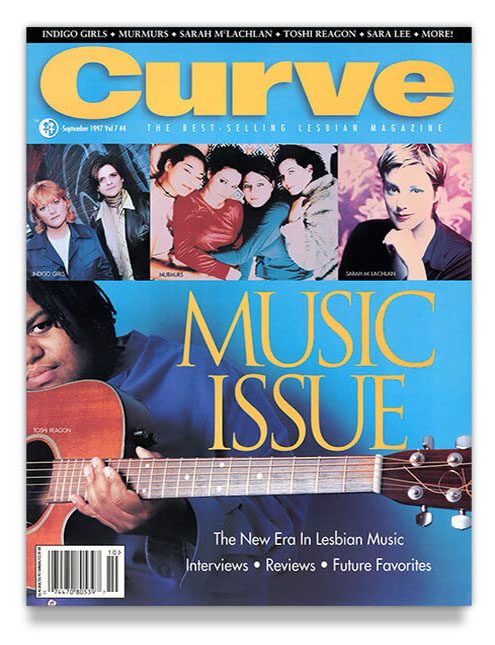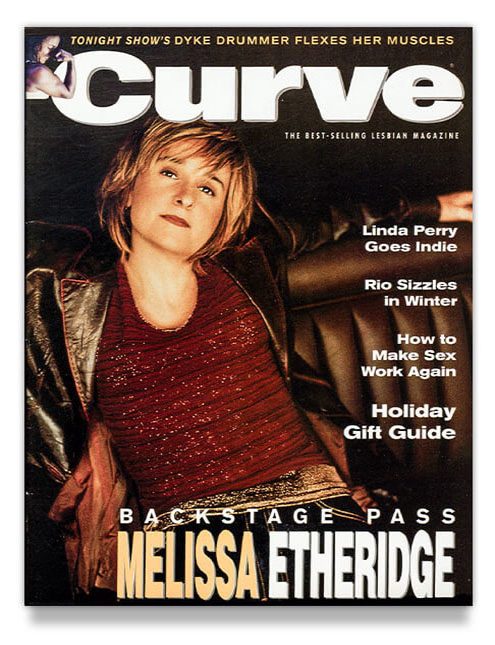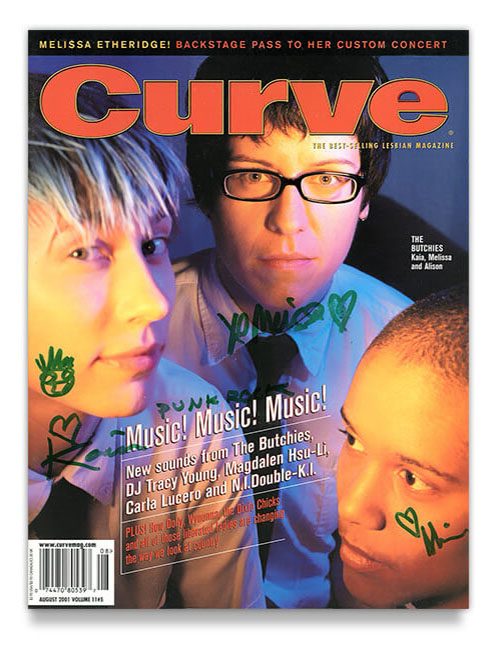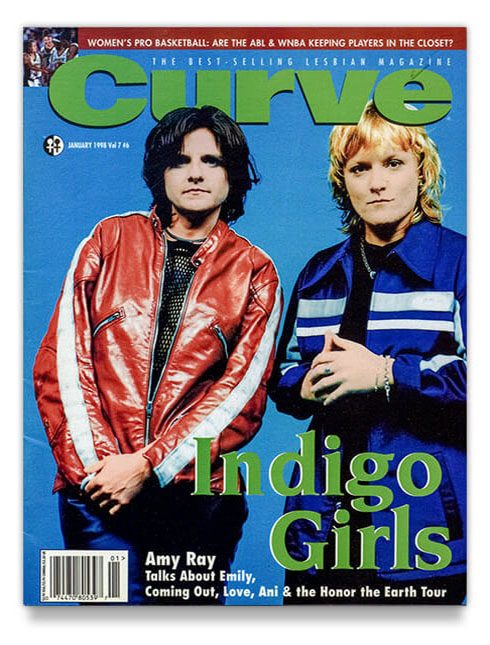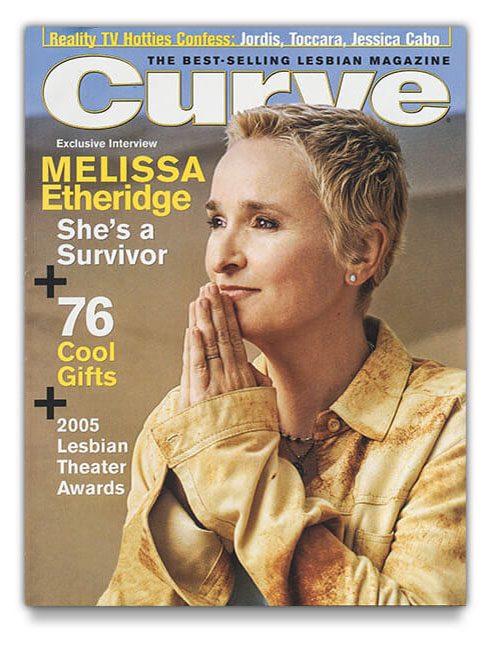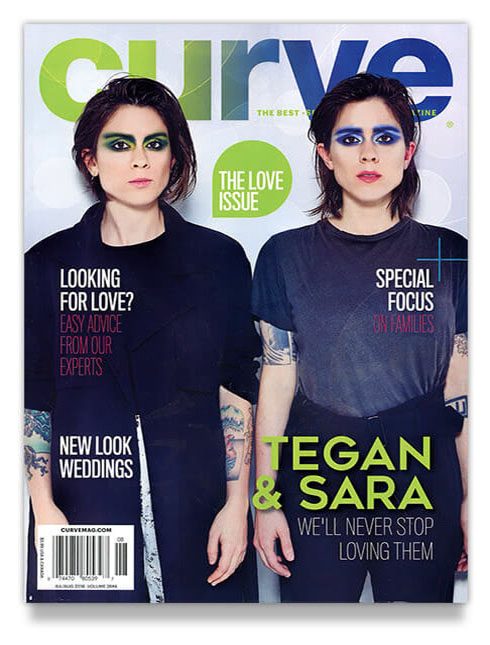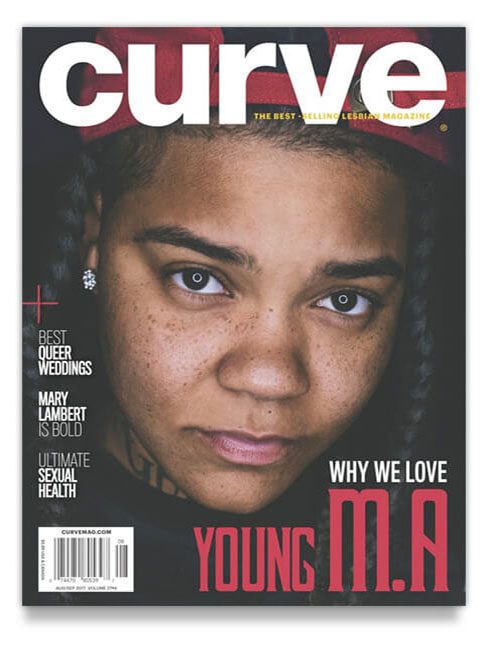Curve publisher Franco Stevens reflects on a genre of particular importance to lesbians and queer women.
Music has a remarkable way of transporting us to different times and places. Put on Two Nice Girls’ “The Queer Song,” and I’m instantly 23 years old again, laying on the futon in the living room of my Castro District flat-turned-Deneuve-magazine office. The smell of three-meal leftovers from Poncho Villa, my favorite burrito joint in San Francisco’s Mission District, and the sound of the number 33 bus clicking up the steep hill on 18th Street are as vivid as if they happened yesterday. Like this song, the music featured in our magazine has the power to evoke such intense memories and emotions, connecting us to our past—and to each other.
As I peruse the Deneuve and Curve Archive, I am reminded of our musical journey. Each issue, for thirty years, captured how music and the artists who created and performed it have impacted our lives. Remember mixtapes? Giving a girl a mixtape was a way to share your deepest desires. I’d love to have a mixtape of all the songs we covered over the years. I’m sure each song would transport me to a place and time when we worked on a particular issue, creating a platform that celebrated the voices and stories of lesbians and queer women often overlooked by mainstream media.
From the very beginning of Deneuve magazine through the evolution of Curve today, music has been more than just a backdrop to our stories. It has been the heartbeat of our community. I have witnessed firsthand how music reflects our struggles and triumphs and serves as a powerful connector, building bridges between us with lyrics that resonate deeply. Whether it’s Melissa Etheridge’s “Come to My Window,” Tegan and Sara’s “Closer,” Young M.A’s “Girlfriend,” or the soulful tunes of Tracy Chapman, the magazine’s coverage provided a platform for these artists to speak directly to you, their most dedicated listeners. You can find the Phranc interview from that first issue here and the interview with Two Nice Girls that resulted from those sleepless nights of creating the first magazine here.
I vividly remember a particularly challenging day in the Curve offices back in the late 1990s. I had just gone through a painful breakup, and we were on a tight deadline to get the magazine to the printer. The weight of the heartbreak felt unbearable. I was sitting at my desk, struggling to focus, when Tracy Chapman’s “Fast Car” started to play. The raw, emotional lyrics about dreams and escape struck a deep chord within me. As the song filled the room, I felt tears streaming down my face. The words encapsulate my feelings of longing and heartache perfectly. At that moment, the power of music to heal and unite was profoundly clear to me as the art director and editor came over and gave me a big joint hug.
As we transitioned to Curve, our dedication to showcasing the intersection of music and lesbian culture only grew stronger. The Michigan Womyn’s Music Festival, a landmark event in our community, was a frequent feature in our pages. This festival holds a complex place in our history. While it created an empowering space where women could connect, express themselves freely, and celebrate their identities, it was also a site of controversy due to its policy on transgender inclusion. These complexities are part of our collective journey, reflecting both the challenges and the progress within our community.
Artists like the Indigo Girls, who graced the festival’s stage multiple times and were featured on the cover of Deneuve and Curve several times, played a significant role in this dynamic. Their performances at Michigan were more than just concerts; they were communal experiences that brought women together, creating a powerful sense of unity and shared purpose.
One particularly unforgettable moment in our editorial history was an interview with Melissa Etheridge, published in Curve in the early 2000s. Reading Melissa’s candidness about her coming out journey, her battles with breast cancer, and how these experiences influenced her music was deeply moving. Her hit song “Come to My Window” became more than just a track-it was an anthem of yearning and defiance, embodying the emotional landscape of so many of our readers, myself included.
Over the years, our magazine has chronicled these musical journeys, providing a platform for artists to share their stories and for readers to find resonance and representation. With its unique ability to convey the depths of human experience, music has been a thread that weaves through the fabric of our collective narrative, offering comfort, challenging the status quo, and celebrating our identities. It has been a part of our story and helped shape it, giving voice to our struggles, triumphs, and everything in between.
As we look to the future, Curve remains steadfast in our commitment to amplifying the voices of queer musicians who continue to inspire and unite us. From indie rock to electronic beats, the diverse genres and artists featured in our pages reflect the rich mosaic of our community.
I recently had the opportunity to contribute to the new Curve Power List, and it’s truly remarkable to see how musicians continue to make up a significant portion of those shaping our community. Artists such as Ariana DeBose, Brandi Carlile, Brandy Clark, Hayley Kiyoko, Janelle Monáe, LP, and Marx Cassity are creating incredible music and using their platforms to advocate for LGBTQ+ rights and visibility. Their impact on our community is profound, and their voices resonate deeply with so many of us, shaping the narrative of our shared experiences and struggles.
 Thank you for being a part of this ongoing symphony. Your support and participation have been instrumental in our journey. Let the music play on, and let us continue to celebrate and amplify the voices of queer musicians together.
Thank you for being a part of this ongoing symphony. Your support and participation have been instrumental in our journey. Let the music play on, and let us continue to celebrate and amplify the voices of queer musicians together.
